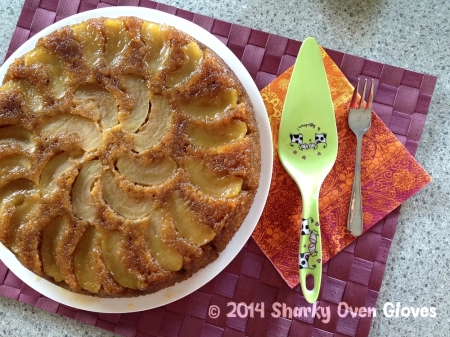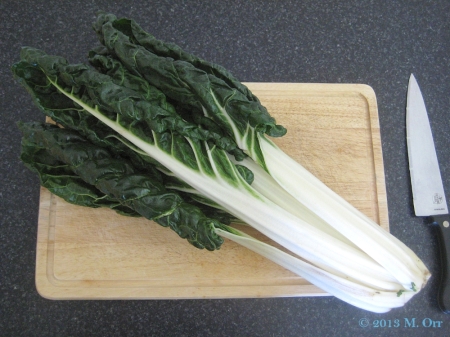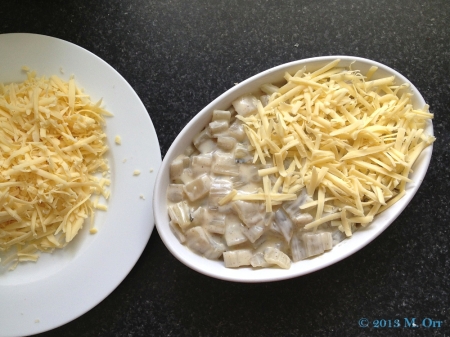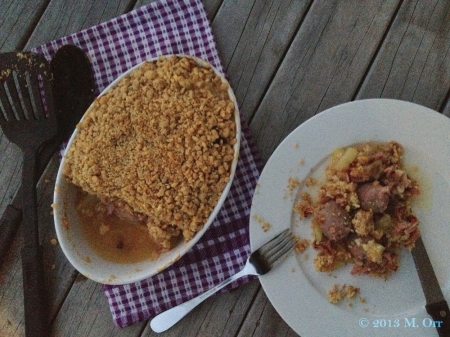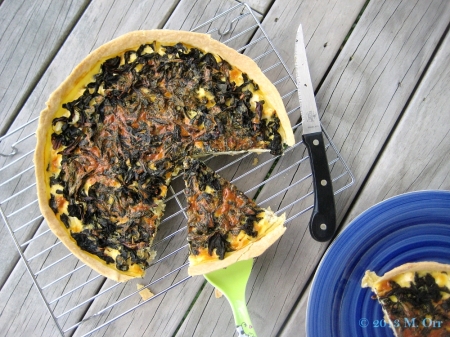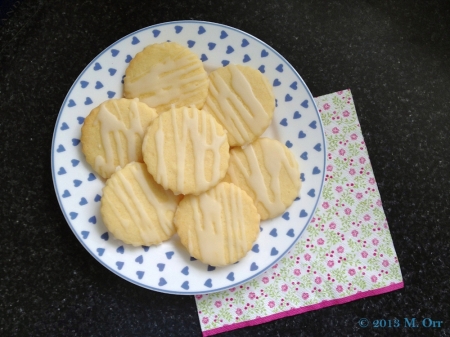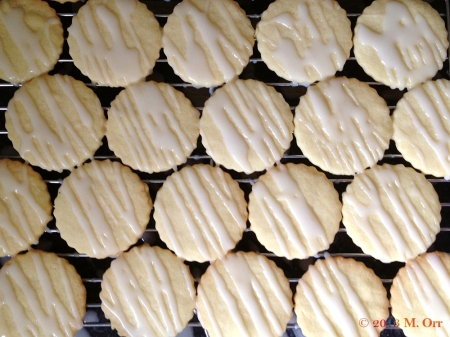 I’ve moved house since my last post. I was only moving three minutes away, but given how much crap I seem to have accumulated on top of the ridiculous amount of stuff I already had, it turned into a feat of epic proportions. I succeeded though, and have been busy settling in and discovering the quirks of my new kitchen (as well as trying to find the best light for photos – I’m still working on that one). The first thing that I unpacked was all my baking paraphernalia, so that I could participate in this month’s Baking with Spirit, guest-hosted by Craig over at The Usual Saucepans. He has challenged us to “Reinvent a Classic.”
I’ve moved house since my last post. I was only moving three minutes away, but given how much crap I seem to have accumulated on top of the ridiculous amount of stuff I already had, it turned into a feat of epic proportions. I succeeded though, and have been busy settling in and discovering the quirks of my new kitchen (as well as trying to find the best light for photos – I’m still working on that one). The first thing that I unpacked was all my baking paraphernalia, so that I could participate in this month’s Baking with Spirit, guest-hosted by Craig over at The Usual Saucepans. He has challenged us to “Reinvent a Classic.”
Initially, I wanted to do something G&T-inspired – Craig and I first became friends after discovering a mutual love for gin, so it seemed appropriate. I had a few ideas, but I wasn’t really feeling excited about any of them. Then, as I was unpacking some bottles of ginger beer, it hit me. Gin and ginger beer is a thing (well… I’m pretty sure it’s a thing. Ok, I just looked it up and apparently it’s gin and ginger ale that’s a thing. A thing called a Gin Gin). A couple of years ago, I had spiced mulled gin served with apple juice and it was delicious (made by Craig actually – how fitting). What if I made an apple and ginger upside-down cake with gin in it?
So that’s exactly what I did. There isn’t actually any ginger beer (or ginger ale) in the cake because I didn’t want to open a whole bottle just to use a little bit, but it’s represented by ginger and other spices. I thought about making this with pears, but I happened to have plenty of apples and no pears, so that was that. Like many upside-down cakes, this is definitely a make-the-day-before cake. I tried some of the cake not long after baking and couldn’t taste the gin, but the flavour developed overnight and you could taste it the next day – it was subtle, but added something a little different to the flavour profile of the cake.
Apple, ginger & gin upside-down cake
Serves 8-10
Adapted from A Treasury of New Zealand Baking
Firm apples that keep their shape when baking are key, as you don’t want them to disintegrate into mush. The actual number of apples required obviously will depend on their size and the size of the cake tin. I reckon the recipe would be equally delicious with pears rather than apples, or a mix of the two. Whilst utterly delicious as a snack (or breakfast…), this cake would also make a wonderful dessert, served with whipped cream. The cake is best eaten the next day so that the caramel can really soak in and the gin flavour can develop, and will keep for a couple of days in an airtight container.
Ingredients
For the cake:
225g unsalted butter, softened
275g light brown sugar
4 large eggs, room temperature
250g all-purpose flour
4 tsp baking powder
3 tsp ground ginger
1 tsp ground cinnamon
½ tsp ground nutmeg
¼ tsp ground cloves
Pinch of salt
2 tbsp gin
3 or 4 apples (I used Granny Smith)
For the caramel:
100g unsalted butter
130g light brown sugar
3 tbsp gin
Directions
To prepare the cake:
1. Line the base of a 24 or 26cm round deep cake tin with baking paper. Pre-heat the oven to 190°C/fan oven 170°C.
2. In a large bowl, cream together the butter and brown sugar with an electric whisk until light and fluffy. Beat in the eggs one at a time.
3. Sift the flour, baking powder, spices, salt and gin into the egg mixture and stir together with a spatula or large spoon until just combined.
4. Peel, core and cut the apples into eighths. Set aside.
To prepare the caramel:
5. In a small saucepan, melt the butter and sugar together to make the caramel. Once the sugar has completely melted and the mixture is smooth, stir in the gin and pour into the prepared cake tin. Arrange the apples over the top of the caramel, then cover with the cake batter, smoothing the top (it doesn’t have to be perfect).
6. Place the cake tin on a baking tray large enough to catch any caramel that might bubble over the sides (much easier than cleaning a caramel-encrusted oven…) and bake for 50-55 mins until a skewer comes out clean. Cool in the cake tin for about 10 mins before turning out onto a serving plate to cool completely. The cake is best eaten the next day.
Enjoy!

